Bookworm: Building an expressive grammar of humanities text analysis
Ben Schmidt
Bookworm
Building an expressive grammar for humanities text analysis
Benjamin Schmidt
Assistant Professor of History, Northeastern University; Core Faculty, NuLab for Texts, Maps, and Networks
Intro
Acknowledgements
Institutions
Northeastern University/Rice University Cultural Observatory
Erez Lieberman Aiden
Neva Cherniavsky, Martin Camacho, Matt Nicklay, Billy Janitsch, JB Michel.
Acknowledgements
Funders
- Digital Public Library of America
- Harvard Cultural Observatory
- National Endowment for the Humanities

- github.com/Bookworm-project
- bookworm.culturomics.org
Practical
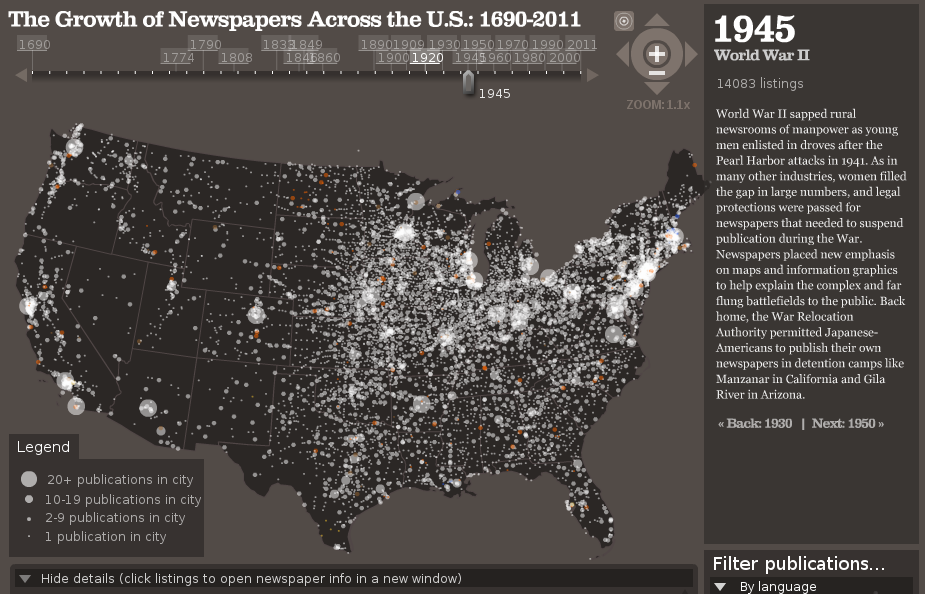
Bill Lane Center for the American West: http://www.stanford.edu/group/ruralwest/cgi-bin/drupal/visualizations/us_newspapers
Textual Metadata: Correspondence Networks
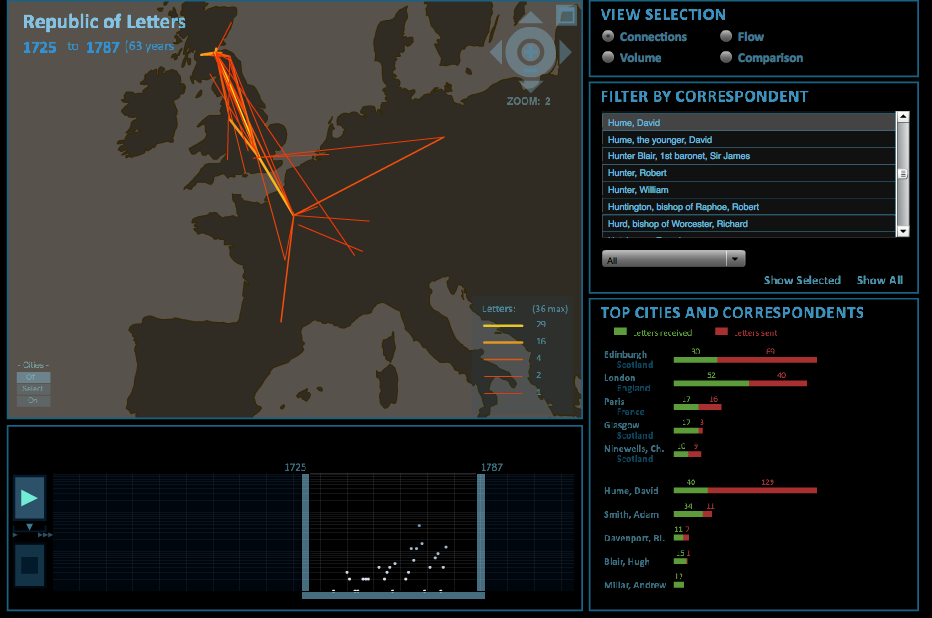
Mapping the Republic of Letters
Textual Metadata: Trial Lengths

Data Mining with Criminal Intent/The Old Bailey Online

ICOADS Deck 701, US Maury Collection (1789-c.1865) ICOADS
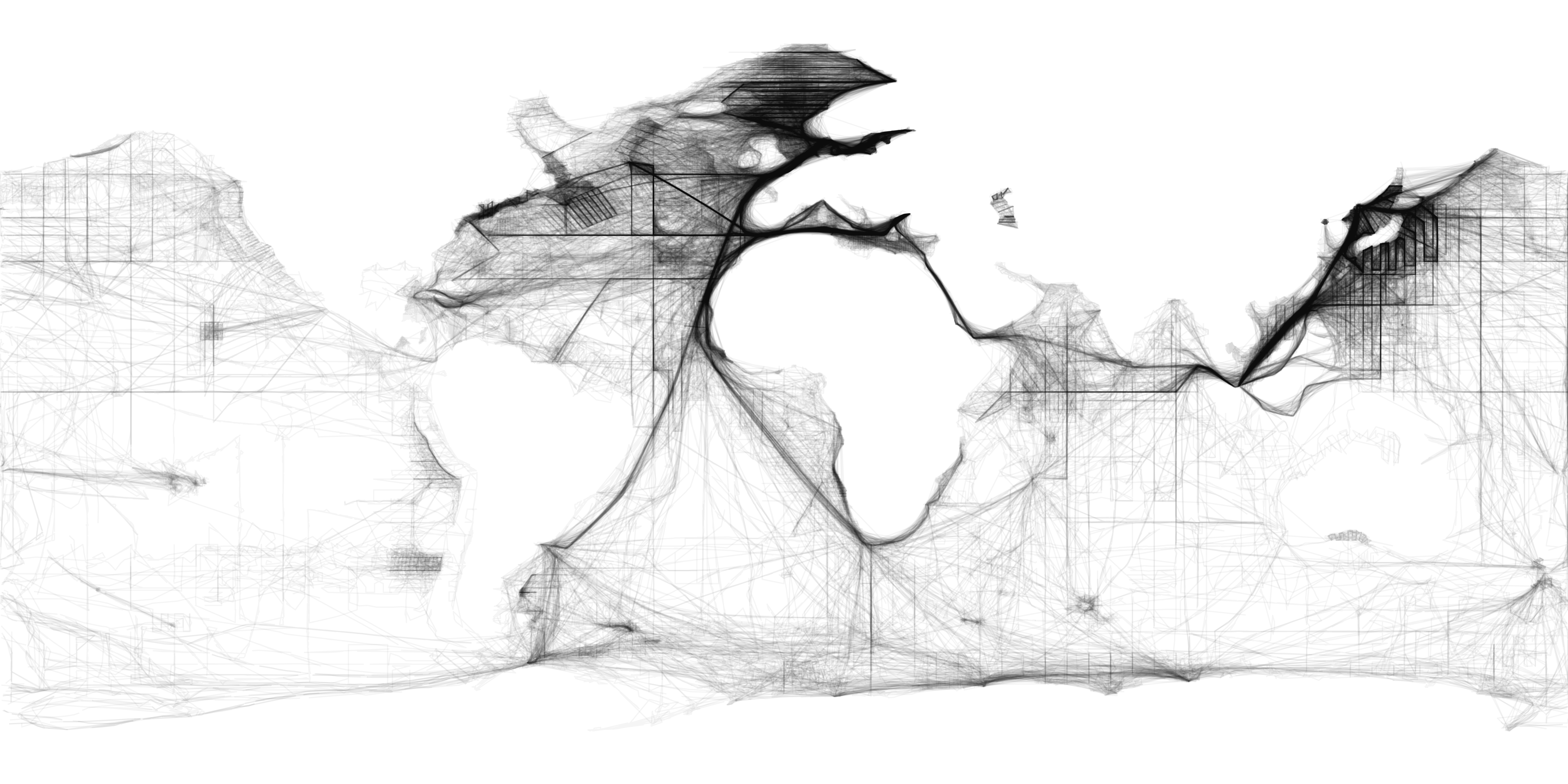
ICOADS Deck 735, Russian Research Vessel (R/V) Digitization
books.google.com/ngrams
books.google.com/ngrams
02138
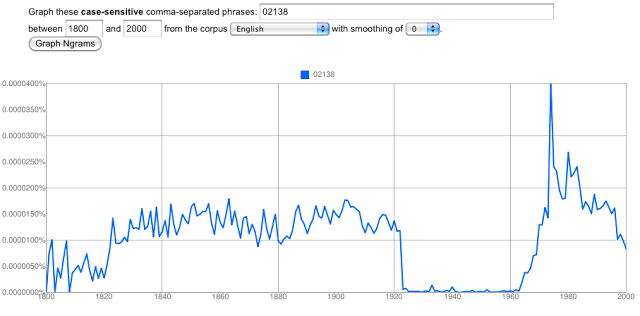
02138
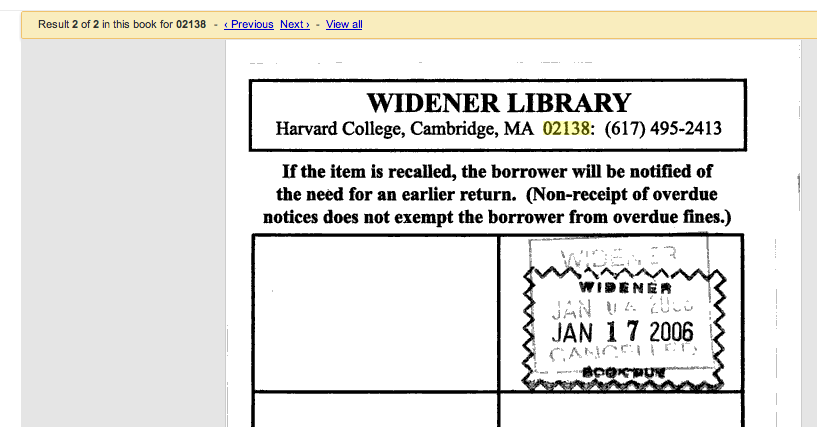
Google Partner Libraries
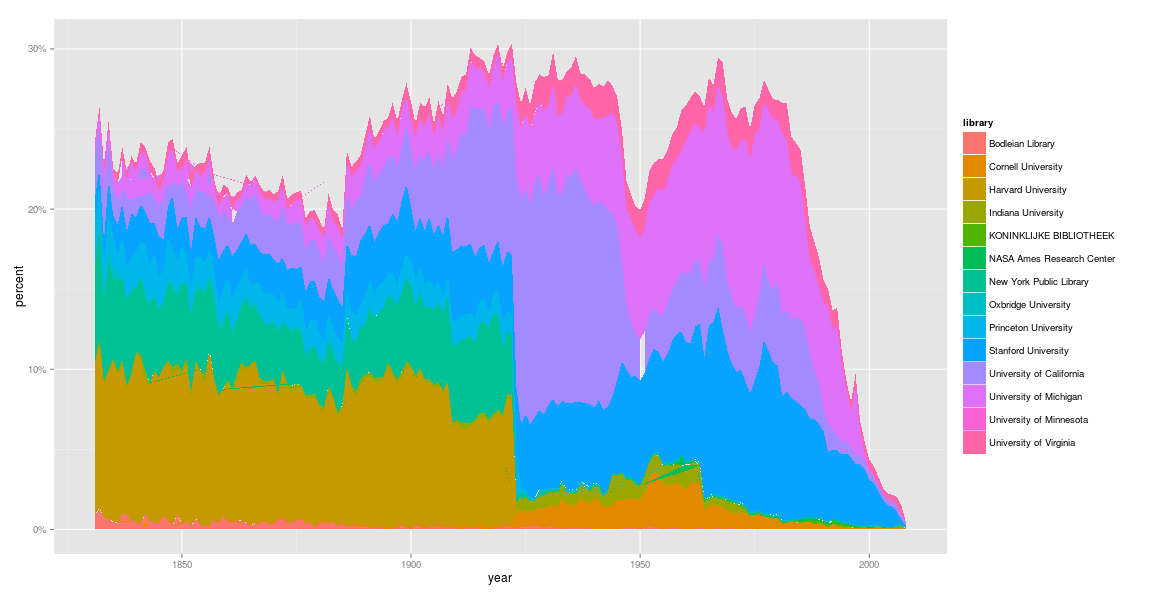
Bookworm Open Library

1 million books, 91 billion words
Some Bookworm instances at Northeastern and Rice:
- Science articles: bookworm.culturomics.org/arxiv
- Movies and television: movies.benschmidt.org
- Historical Newspapers: bookworm.culturomics.org/ChronAm
Yale University: full run of Vogue Magazine
http://bookworm.library.yale.edu/collections/vogue/ 
Medical Heritage Library (30,000 medical books)

US State Department

Hathi Trust

http://sandbox.htrc.illinois.edu/bookworm/
Abstract
II. A grammar of text analysis
Bookworm Core Philosophy--infrastructures
- Text curators can enable new uses by sharing new forms.
- Large text collections share fundamental problems of presentation.
- Sharing presentation forms will improve them.
- Data visualization is a primary output.
A single backend can drive multiple representations.

Bookworm Core Philosophy--data structures
- Even humanists who don't what it is will benefit from an expressive way to describe text analysis at the very large scale
- Metadata alone can enable most uses in the humanities.
- What we think of as textual content should be reconceived of as more metadata.
- Comparisons across sets is the most important element.
An API vs a grammar
Grammar, part I: Creating a corpus
"search_limits": {
"publish_country":["United States"],
"year": {
"$lte": 1920,
"$gte": 1890
},
"word": ["focus attention"]
},"compare_limits":{
"publish_country":["United States"],
"year": {
"$lte": 1920,
"$gte": 1890
}
}Grammar, Part II: Defining Text groups and tokenizations.
{"search_limits": {
"word": ["need to"]},
"database":"movies",
"aesthetic":{"x":"MovieYear","y":"WordsPerMillion"},
"plotType":"linechart"
}Grammar, Part II: Defining texts and tokens
{
"plotType": "heatmap",
"search_limits": {
"word": ["concentrate attention"]
},
"counttype": ["WordsPerMillion"],
"groups": ["decade", "subject"]}Grammar, Part II:
Bicycles
Library composition

Statistics returnable from comparing text and token counts across two collections:
- Percentage of Texts
- Uses per million words
- Average length of books.
- TF-IDF
- Dunning Log-likelihood.
- ???
Dunning-characteristic words by gender in reviews of history professors, Ratemyprofessor.com

Dunning-characteristic words by gender in negative reviews of history professors, Ratemyprofessor.com
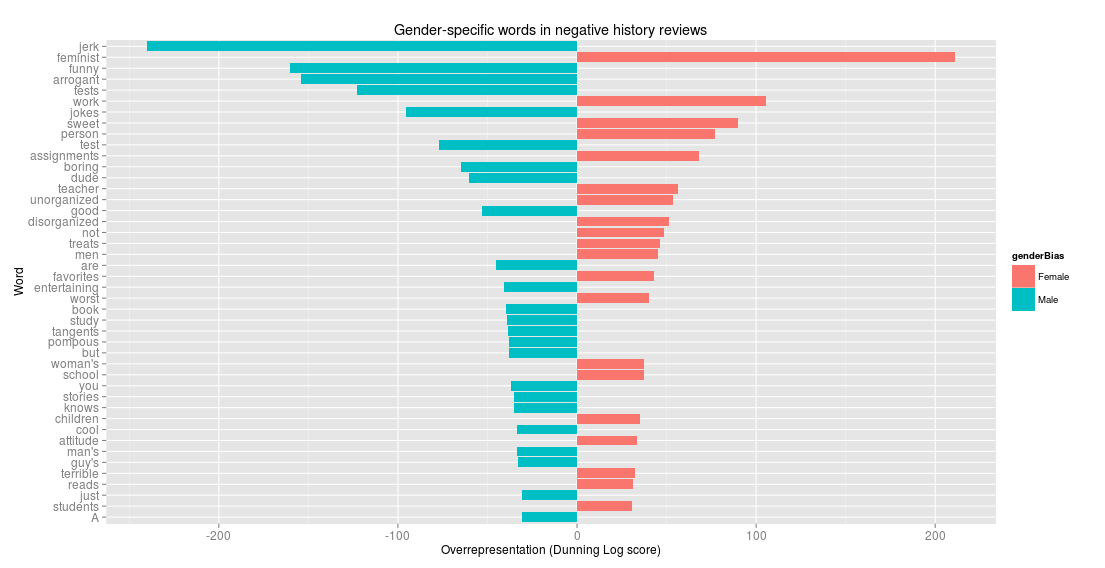
Dunning-characteristic words by gender in negative reviews of history professors, Ratemyprofessor.com
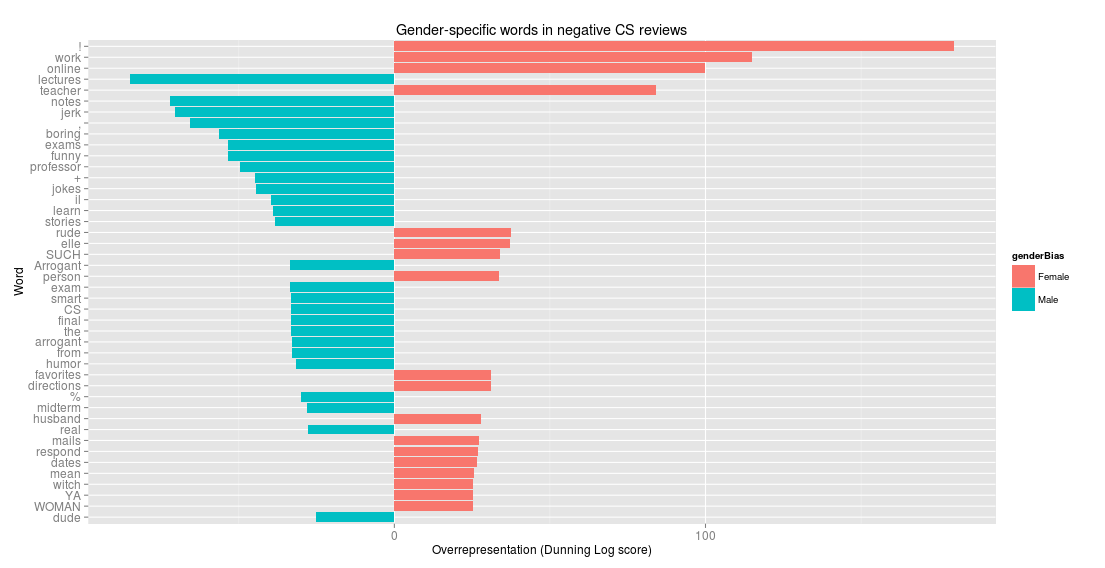

A grammar promotes extensibility.
Practical: a grammar promotes critical combination of different tools..
How Humanists use topic models badly:
- Only perfunctory efforts to link back into other forms of metadata.
- Straightforward use as dimensionality-reduction without spot checks.
- Assumption of stability in a single topic's composition across time, genre, etc.
Differing language in two TV shows
{"database": "movies",
"plotType": "wordcloud",
"search_limits": {
"TV_show": ["Seinfeld"]
},
"compare_limits": {
"TV_show": ["Cheers"]
},
"aesthetic": {
"label": "unigram",
"size": "Dunning"
}}Differing language in two TV shows
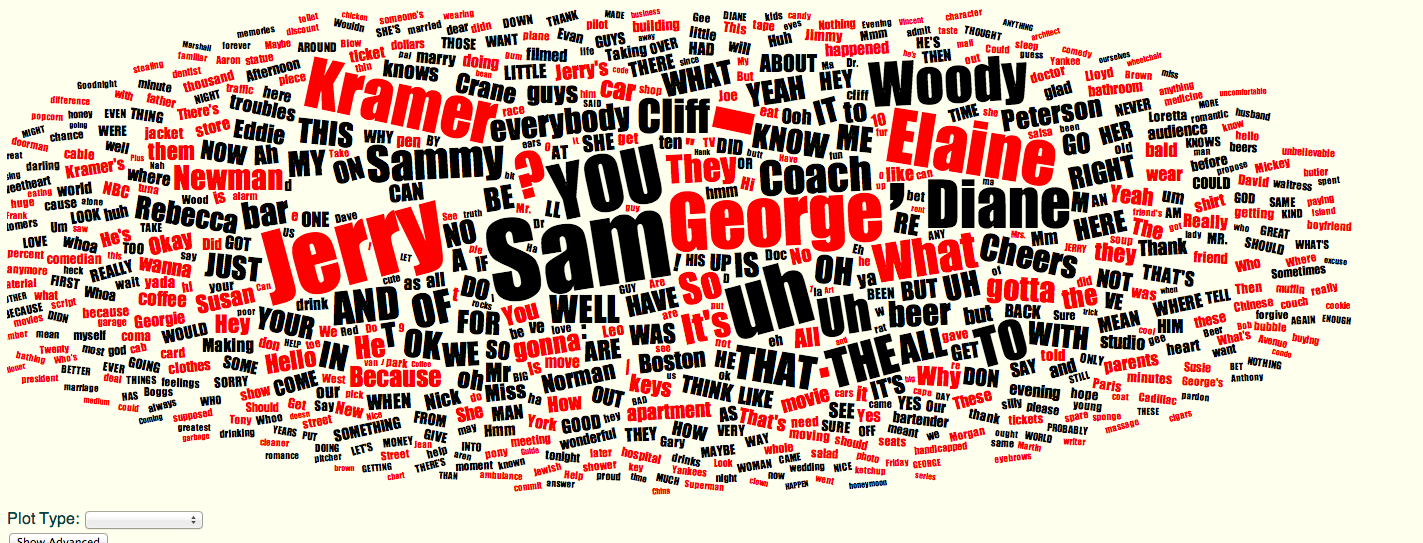
Topics as tokens
{
"database": "movies",
"plotType": "wordcloud",
"search_limits": {
"TV_show": ["Seinfeld"]
},
"compare_limits": {
"TV_show": ["Cheers"]
},
"aesthetic": {
"label": "unigram",
"size": "Dunning"
}}Differing language in two TV shows

Deadwood and the Wire, Topics
Deadwood and the Wire, Topics
Text Encoding Initiative produces micro-texts
{"database": "ChronAm",
"plotType": "map",
"method": "return_json",
"search_limits": {},
"aesthetic": {
"point": "placeOfPublication_geo",
"size": "TextCount"
}}{"database": "ChronAm",
"plotType": "map",
"method": "return_json",
"search_limits": {},
"aesthetic": {
"point": "placeOfPublication_geo",
"size": "TextCount",
"time": "publish_year"}}Newspaper flu coverage, 1917-1919
{"database": "ChronAm",
"plotType": "map",
"method": "return_json",
"search_limits": {"word":["flu","influenza"],
"publish_year":{"$lte":1920,"$gte":1917}},
"smoothingSpan":25,
"aesthetic": {
"time":"publish_day",
"point": "placeOfPublication_geo",
"size": "TextPercent"}}{"database": "viral",
"plotType": "map",
"method": "return_json",
"search_limits": {
"chunk": [6]
},
"aesthetic": {
"point": "placeOfPublication_geo",
"size": "WordCount",
"time": "date_year"}}Viral Texts: Ryan Cordell and David Smith, Northeastern University
{"database": "viral",
"plotType": "map",
"method": "return_json",
"search_limits": {
"topic": {
"$gte": 10
}
},
"aesthetic": {
"point": "placeOfPublication_geo",
"size": "WordCount",
"time": "topic",
"label": "topic_label"}}
Conclusion
What does this tell us that we haven't seen already?
- What do you mean by "us," kemosabe?
- Evidence without source criticism is increasingly problematic
- Allows sharing and elaboration of evidence
- Allows new strategies of analysis for metadata
- Evidence of Absence
- Comparison of tools for inference.
Code: github.com/bookworm-project
Docs: http://bookworm-project.github.io/Docs
Plugins: github.com/benmschmidt/Bookworm-Mallet
Project Description: bookworm.culturomics.org
Hathi Browser: http://sandbox.htrc.illinois.edu/bookworm
Ben Schmidt: benschmidt.org
These slides: benschmidt.org/slides/Dartmouth